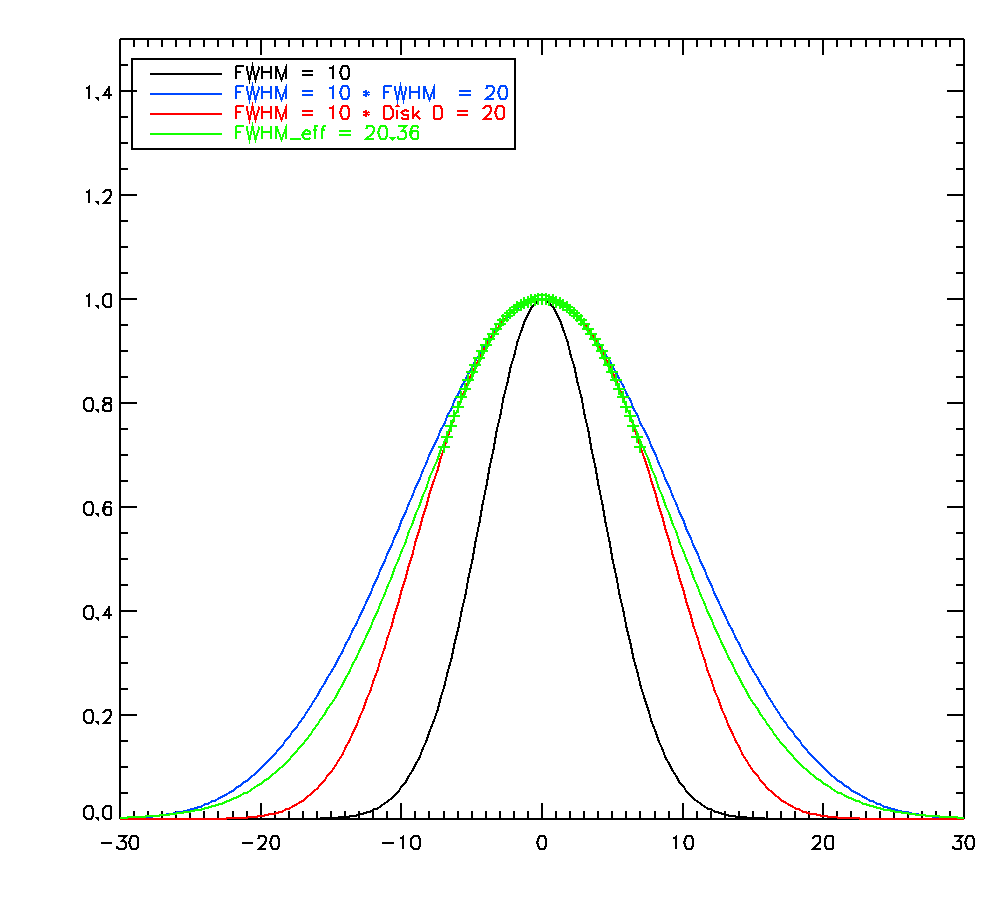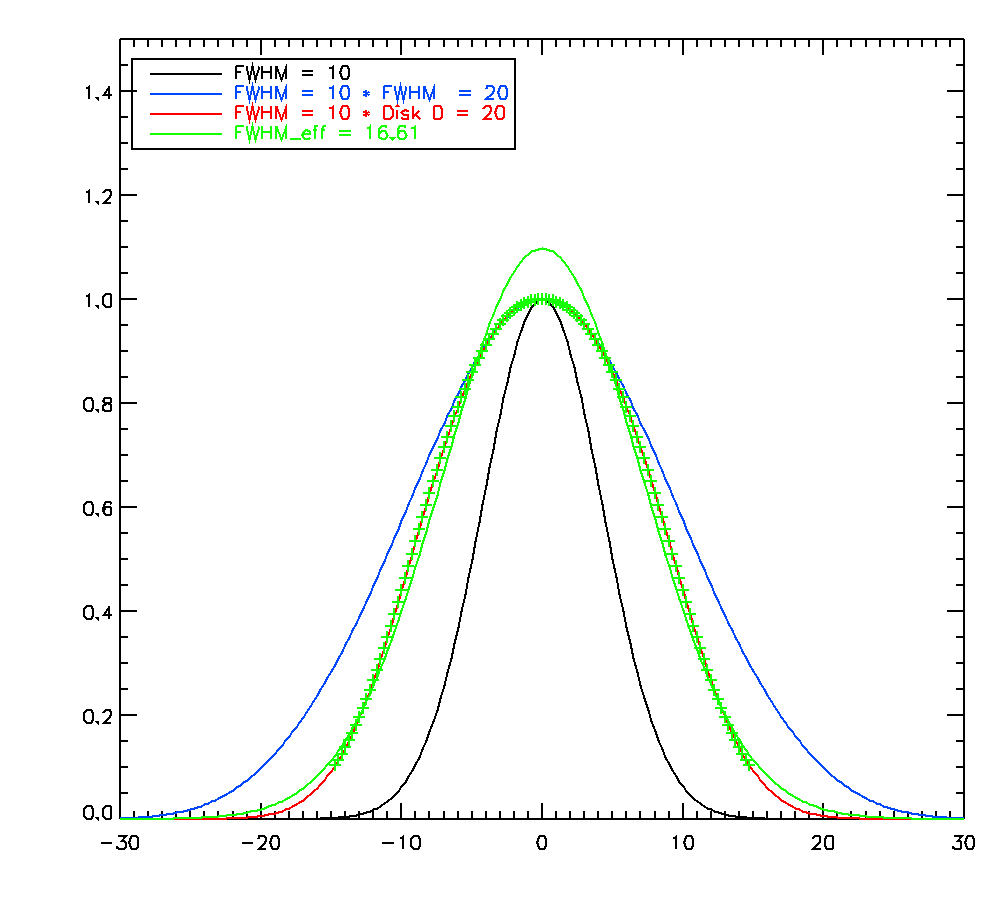|
⇤ ← Revision 1 as of 2012-06-01 16:18:34
Size: 1145
Comment:
|
Size: 1171
Comment:
|
| Deletions are marked like this. | Additions are marked like this. |
| Line 11: | Line 11: |
| {{attachment:disk_convol_D=20_max_frac=0.7.png||width=400}} {{attachment:disk_convol_D=20_max_frac=0.1.png||width=400}} |
{{attachment:OffProcNika4/disk_convol_D=20_max_frac=0.7.png||width=400}} {{attachment:OffProcNika4/disk_convol_D=20_max_frac=0.1.png||width=400}} |
NP, June 1st, 2012
Thanks to Robert's and Samuel's verifications, I found a bug in my simulation (the disk diameter was actually taken as the radius, hence doubling the effective size of the disk and enlarging the broadening). I remove the old plot of May 29 to avoid confusion and provide updated plots here below.
The following plot shows the result of the convolution of a Gaussian (FWHM=10 arcsec) by a Gaussian (FWHM=8arcsec) or a disk (D=8arcsec). The gaussian indeed leads to a large broadening compared to the disk. Fitting an effective gaussian on the result of disk convolution leads to a slight overestimation of the input 10 arcsec.
If we proceed with the same exercise but with a 20arcsec gaussian or disk, this time the difference between the convolution by a disk or a gaussian becomes significant. An effective gaussian can still be fit, but only around the peak (crosses highlight the points on which the fit is performed).


